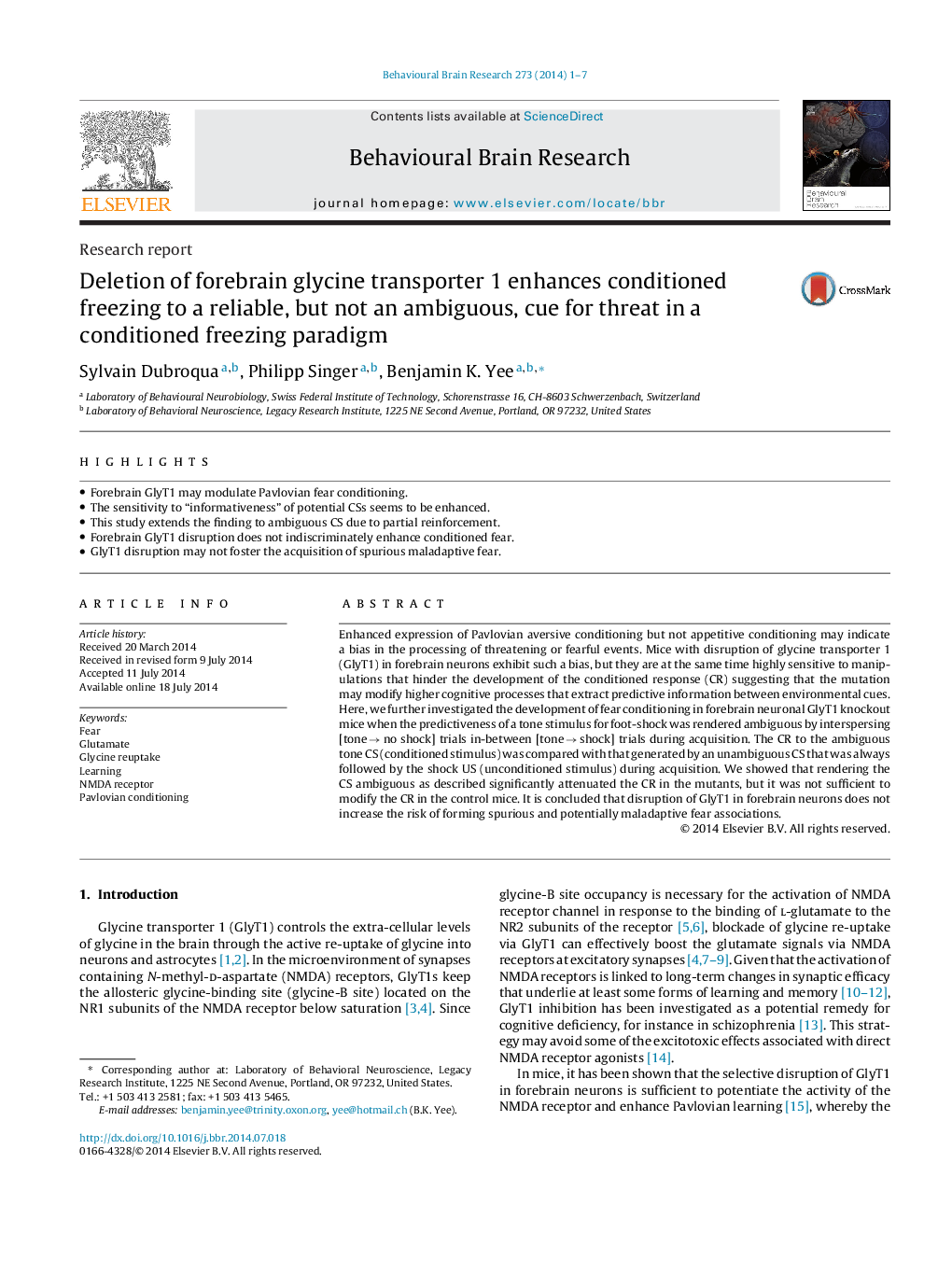| کد مقاله | کد نشریه | سال انتشار | مقاله انگلیسی | نسخه تمام متن |
|---|---|---|---|---|
| 4312498 | 1612959 | 2014 | 7 صفحه PDF | دانلود رایگان |
• Forebrain GlyT1 may modulate Pavlovian fear conditioning.
• The sensitivity to “informativeness” of potential CSs seems to be enhanced.
• This study extends the finding to ambiguous CS due to partial reinforcement.
• Forebrain GlyT1 disruption does not indiscriminately enhance conditioned fear.
• GlyT1 disruption may not foster the acquisition of spurious maladaptive fear.
Enhanced expression of Pavlovian aversive conditioning but not appetitive conditioning may indicate a bias in the processing of threatening or fearful events. Mice with disruption of glycine transporter 1 (GlyT1) in forebrain neurons exhibit such a bias, but they are at the same time highly sensitive to manipulations that hinder the development of the conditioned response (CR) suggesting that the mutation may modify higher cognitive processes that extract predictive information between environmental cues. Here, we further investigated the development of fear conditioning in forebrain neuronal GlyT1 knockout mice when the predictiveness of a tone stimulus for foot-shock was rendered ambiguous by interspersing [tone → no shock] trials in-between [tone → shock] trials during acquisition. The CR to the ambiguous tone CS (conditioned stimulus) was compared with that generated by an unambiguous CS that was always followed by the shock US (unconditioned stimulus) during acquisition. We showed that rendering the CS ambiguous as described significantly attenuated the CR in the mutants, but it was not sufficient to modify the CR in the control mice. It is concluded that disruption of GlyT1 in forebrain neurons does not increase the risk of forming spurious and potentially maladaptive fear associations.
Journal: Behavioural Brain Research - Volume 273, 15 October 2014, Pages 1–7
